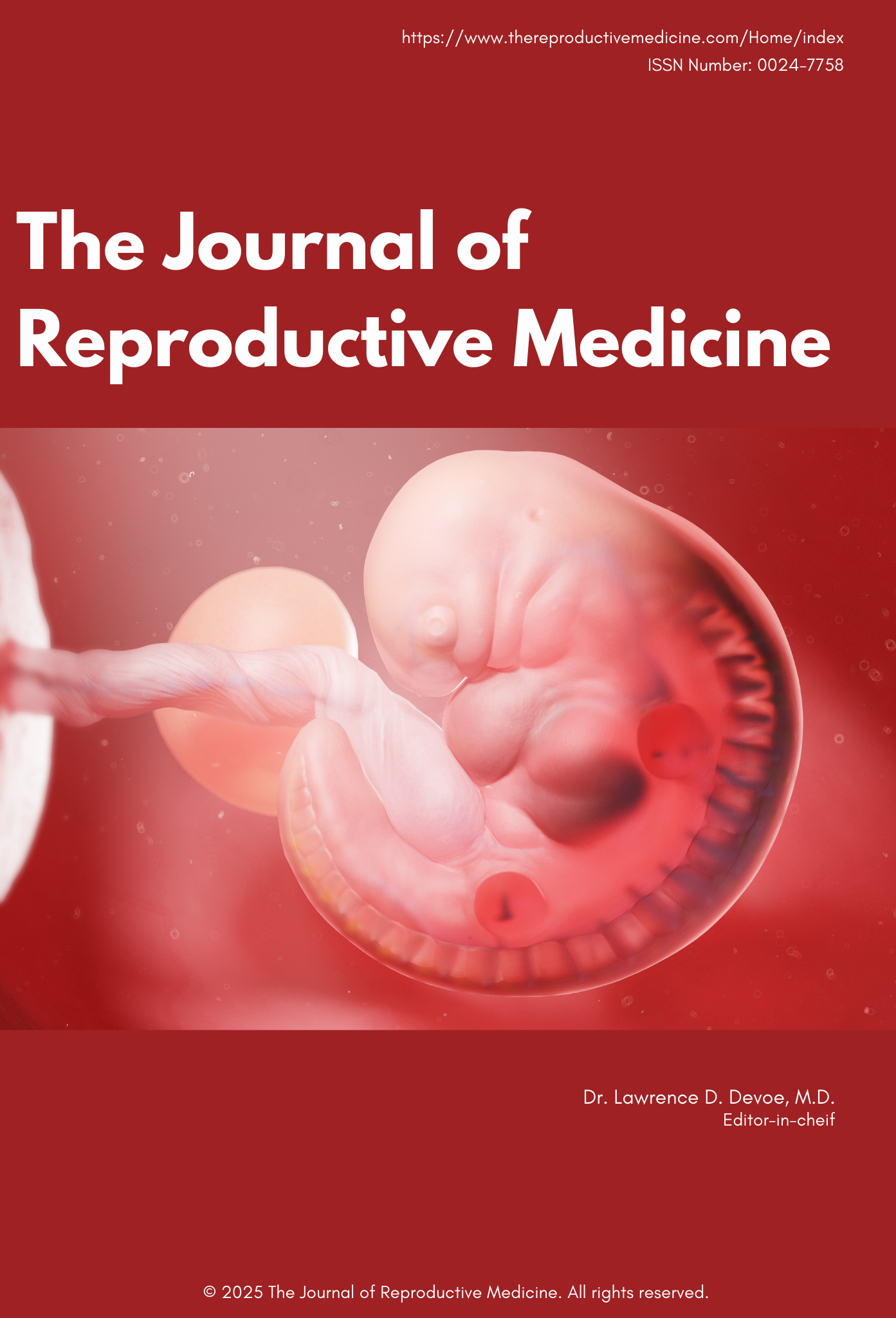Volume 53, Number 7, July 2008
| Editorial | |
| 453 | " align="left" valign="top" class="tocTitle">
Lawrence D. Devoe, M.D.
|
|
|
|
| Symposium | |
| Gestational Trophoblastic Disease: Presentations from the XIVth World Congress on Gestational Trophoblastic Diseases Ross S. Berkowitz, M.D., and Donald P. Goldstein, M.D., Guest Editors |
|
| 455 | " align="left" valign="top" class="tocTitle">
Ross S. Berkowitz, M.D., and Donald P. Goldstein, M.D.
This symposium provides a broad view of the latest developments in the understanding of the biology and management of gestational trophoblastic diseases and also points to new opportunities for advances in the future.
|
|
|
|
| 457 |
Laurence A. Cole, M.D., Ph.D., Sarah A. Khanlian, M.P.H., and Carolyn Y. Muller, M.D.
The use of proportion of free beta-subunit (>30%) as a seemingly absolute test for identifying placental site trophoblastic tumor and nontrophoblastic neoplasms is confirmed.
|
|
|
|
| 465 |
Julia E. Palmer, M.D., M.R.C.O.G., Madeleine Macdonald, M.B.Ch.B., Michael Wells, B.Sc., M.D., F.R.C.O.G., F.R.C.Path., Barry W. Hancock, M.D., F.R.C.P., F.R.C.R., D.C.H., and John A. Tidy, M.D., F.R.C.O.G.
Reporting of cases in the literature should be thorough and contain detailed information on clinicopathologic and immunohistologic characteristics and treatment, because of the apparent relative chemoresistance of epithelioid trophoblastic tumors.
|
|
|
|
| 476 |
Victoria Garc�a-Barriola, M.D., Mirian Naranjo de G�mez, M.D., Sonia Dickson-Gonz�lez, M.D., Lina Figueira, M.D., and Rafael Cort�s-Charry, M.D.
The possibility of demonstrating the anomalous expression of a maternally imprinted gene using conventional immunohistochemistry on paraffin-embedded, formalin-fixed tissues has diagnostic relevance in molar disease.
|
|
|
|
| 481 |
Leslie A. Garrett, M.D., Elizabeth I. O. Garner, M.D., M.P.H., Colleen M. Feltmate, M.D., Donald P. Goldstein, M.D., and Ross S. Berkowitz, M.D.
Patients should be reassured that although the risk of later molar pregnancy is increased following an episode of molar pregnancy or gestational trophoblastic neoplasia, they can expect similar pregnancy outcomes to that of the general population.
|
|
|
|
| 487 |
Emily Berry, M.D., George S. Hagopian, M.D., and John R. Lurain, M.D.
Vaginal metastases in gestational trophoblastic neoplasia can usually be successfully managed with chemotherapy based on traditional risk criteria and occasional surgical/radiological interventions to control hemorrhage.
|
|
|
|
| 493 |
Evelyn L. Fleming, M.D., Leslie Garrett, M.D., Whitfield B. Growdon, M.D., Michael Callahan, M.D., Nicole Nevadunsky, M.D., Sue Ghosh, M.D., Donald P. Goldstein, M.D., and Ross S. Berkowitz, M.D.
As a result of advances in surgical technique, management of lung metastases can now often be accomplished in a minimally invasive manner with thorascopic surgery.
|
|
|
|
| 499 |
Laurence A. Cole, M.D., Ph.D., and Stephen A. Butler, Ph.D.
With the molecules hyperglycosylated hCG and hyperglycosylated free beta-subunit, which appear to be critical to gestation and tumor progression, we are presented with potential targets for adjuvant therapies in the management of failing pregnancies and the treatment of malignancy.
|
|
|
|
| 513 |
Ma. Stephanie Fay S. Cagayan, M.D., and Maria Suyen Magallanes, M.D.
With the increasing use of early surgical intervention combined with chemotherapy, we think that we are maximizing the benefit that can be derived by our patients from our treatment protocol.
|
|
|
|
| 519 |
Mo�iad Alazzam, M.R.C.O.G., Barry W. Hancock, M.D., F.R.C.P.C., F.R.C.R., D.C.H., and John Tidy, M.D., F.R.C.O.G.
Patients with gestational trophoblastic disease who need hysterectomy belong to an adverse prognostic group with a higher risk score, have a high incidence of malignant pathology and have greater mortality and morbidity.
|
|
|
|
| 525 |
Lucy D. Carter, M.D., Barry W. Hancock, M.D., and Janet E. Everard, S.R.N.
Patients being treated with low-dose intramuscular methotrexate for low-risk gestational trophoblastic neoplasia do not need to be treated routinely in the hospital for their first treatment cycle.
|
|
|
|
| 528 |
Zoltan Nagymanyoki, M.D., Marcus O. Butler, M.D., Michael J. Callahan, M.D., Mana M. Parast, M.D., Vilmos Fulop, M.D., Ph.D., Samuel C. Mok, Ph.D., and Ross S. Berkowitz, M.D.
Understanding these complex relationships and identifying the activating antigen(s) can lead us closer to developing effective immunotherapy for gestational trophoblastic neoplasia and in particular chemoresistant cases.
|
|
|
|
| 535 |
John R. Lurain, M.D., Anna V. Hoekstra, M.D., and Julian C. Schink, M.D.
Our report confirms the importance of centralized GTD centers in providing expertise in the management of these relatively rare diseases.
|
|
|
|
| 541 |
Vilmos F�l�p, M.D., Ph.D., D.Sc., Iv�n Szigetv�ri, M.D., J�nos Szepesi, M.D., Mikl�s T�r�k, M.D., and Ross S. Berkowitz, M.D.
When patients with high-risk metastatic gestational trophoblastic neoplasia are treated in a regional trophoblastic disease center, they clearly benefit from specialized experience and expertise for this uncommon but life-threatening disease.
|






